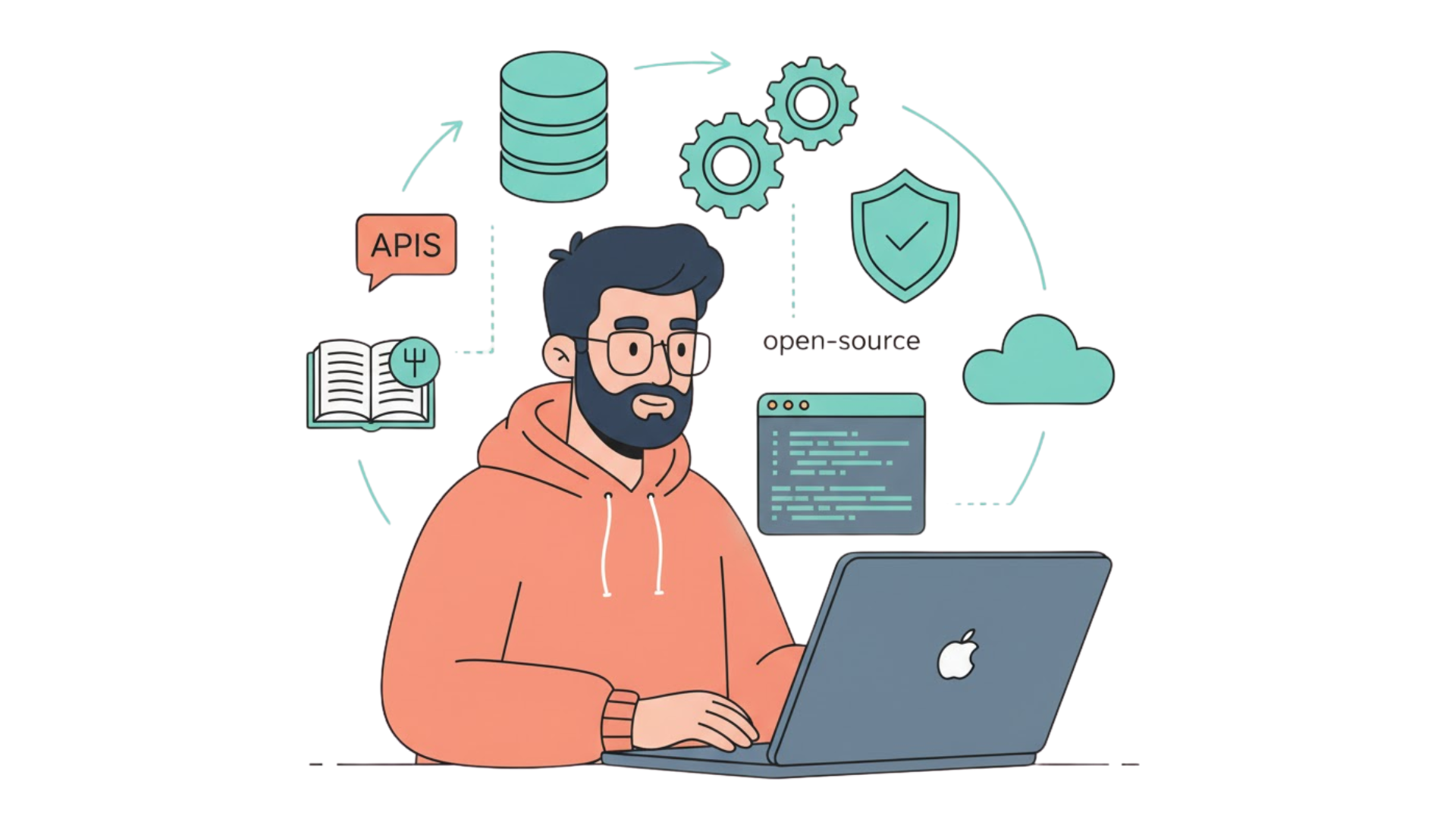Why Developers Prefer Open Source Backend as a Service Platforms
Let’s face it: developers aren’t writing new features as much as they’d like. Instead, too many hours go into configuring servers, wiring up databases, and patching backend logic. One recent developer survey found that up to 84% of engineers said they spent most of their time on maintenance and tech debt, rather than building new functionality.
When your backend is the bottleneck, speed suffers, innovation stalls, and you end up chasing downtime instead of shipping value. That’s why the trend toward open-source Backend as a Service (BaaS) platforms is accelerating. These platforms give developers managed infrastructure and acceleration, while keeping full control, visibility, and flexibility over their stack.
In this article, we’ll explore what open-source BaaS actually means, why developers are increasingly choosing it, and highlight the top 3 open-source backend platforms for 2026, including the one platform that clearly leads the pack when it comes to speed, cost control, and AI integration.
Related Article: Hire a Website Design Specialist
STOP MANAGING TASKS. START LEADING.
SMART Delegation helps you reclaim your role as CEO while building a stronger team.
What Is an Open Source BaaS Platform?
An open-source Backend as a Service (BaaS) platform provides developers with a ready-to-use backend, databases, APIs, authentication, and hosting, all accessible through code or dashboards. The open-source part ensures transparency, allowing developers to inspect, modify, or self-host the platform’s codebase.
This combination solves two persistent issues: speed and ownership. Developers can skip boilerplate infrastructure while maintaining full visibility over how data is handled. From REST and GraphQL APIs to serverless functions and SDK integrations, open-source BaaS platforms are now becoming the go-to choice for teams building apps that need both flexibility and scalability.
Why Developers Prefer Open Source BaaS Platforms
Developers are embracing open-source backend platforms because they strike a balance between control and convenience. The key reasons include:
● Freedom from Vendor Lock-In: Teams can migrate, self-host, or customize their infrastructure without being trapped in a proprietary system.
● Transparency and Security: Open codebases and clear compliance frameworks inspire trust and allow audits at any time.
● Flexibility and Customization: Developers can extend APIs, run custom logic, and connect with their preferred SDKs or frameworks.
● Predictable Pricing and Scalability: Tiered or self-hosted models provide transparent costs, eliminating surprise bills common in closed systems.
● Active Community and Rapid Innovation: Open ecosystems evolve faster, with community plugins, SDK updates, and security patches released continuously.
Together, these benefits make open-source BaaS platforms a practical long-term solution for developers who want to build faster without losing ownership.
Best 3 Open Source Backend as a Service Platforms (2026 Edition)
In a market packed with backend automation tools, a few open-source platforms stand out for their scalability, developer experience, and transparency.
Here are the top 3 open-source Backend as a Service platforms for 2026, based on usability, feature depth, and real-world adoption among developers.
1. Back4App 🥇
Back4App offers one of the most advanced open-source Backend as a Service (BaaS) platforms available today. It’s built for developers who want to launch faster, maintain full control of their data, and scale applications without being tied to a closed ecosystem.
The platform blends three core strengths: AI-powered backend generation (for unmatched speed), open-source flexibility (for developer freedom), and enterprise-grade infrastructure (for reliability and compliance). Together, these make Back4App a trusted choice for engineering teams and startups building complex, data-driven applications.
By combining automation with transparency, Back4App removes the friction of traditional backend setup, letting developers create databases, APIs, and server functions in minutes instead of days, while maintaining ownership of their architecture.
Here’s what sets Back4App apart from other open-source backend platforms:
● AI-Powered Backend Generation: Back4App’s integrated AI Agent and Model Context Protocol (MCP) can generate complete backends from natural-language descriptions. Developers simply describe app logic in text, like “user authentication, chat messaging, and payment gateway integration”, and the system builds it automatically with data models, APIs, and cloud functions.
● Auto-Generated REST & GraphQL APIs: The platform instantly produces APIs that stay in sync with your database, supporting both REST and GraphQL endpoints. It’s ideal for teams building modern, real-time applications across web and mobile.
● Custom Cloud Functions: Developers can add advanced logic using JavaScript-based cloud functions, perfect for payment workflows, user verification, or data aggregation, all without manual infrastructure setup.
● Visual Data Modeling and Dashboard: The spreadsheet-style database interface simplifies schema design, making data modeling intuitive. Developers can track changes, manage relationships, and test endpoints right from the dashboard.
● Full-Stack Hosting and GitHub Deployment: Apps can be hosted directly from GitHub with built-in CI/CD workflows, enabling fast deployment and version tracking.
● Real-Time Database and Sync: Back4App’s scalable non-relational database supports live queries and instant data sync, helping developers build real-time features like leaderboards, chats, or dashboards effortlessly.
● Predictable, Transparent Pricing: Pricing is simple and transparent, no surprise overages or hidden usage fees. Developers can easily scale projects without financial uncertainty.
● Enterprise-Grade Security and Compliance: Back4App is certified under SOC 2, ISO 27001, HIPAA, and GDPR, ensuring secure data handling across industries, including healthcare, finance, and SaaS.
● Open-Source Foundation: Built on Parse Server and Node.js, Back4App keeps developers in control. You can export, self-host, or integrate it with other frameworks — a key advantage for those avoiding vendor lock-in.
● Cross-Platform SDKs and Integrations: Supports major frameworks and languages, including JavaScript, Flutter, Swift, Android, and React Native, giving developers flexibility to work in their preferred stack.
● Active Developer Community and Documentation: Back4App’s documentation, tutorials, and support channels make onboarding fast and painless, essential for teams scaling quickly or onboarding new developers.
User Reviews and Feedback
Back4App holds an impressive 4.9/5 rating on Product Hunt, with developers praising its usability, affordability, and powerful dashboard.
“Back4App has been an invaluable tool for me as I’ve been developing a community-based app as a solo developer. It’s easy to use and works really, really well. I appreciate the ability to manage my database directly in the dashboard. Totally recommend!” - Patrick Detzner
“Back4App’s low-code tools and affordable pricing allowed us to integrate quickly and pass those savings on to our customers, making our app both secure and reliable.” - Uhmazing Studio
Developers also frequently mention how AI automation and open-source flexibility save time without limiting control, two traits rarely found together in a backend platform.
2. NHost
NHost is an open-source backend built on PostgreSQL and Hasura GraphQL, designed for developers who prefer a query-based architecture. It auto-generates APIs, offers built-in authentication, and supports serverless functions out of the box.
NHost focuses heavily on the GraphQL ecosystem, giving developers direct access to structured queries and real-time data updates. While it’s powerful for teams that thrive on SQL and GraphQL, it’s less automated compared to Back4App’s AI-driven backend generation.
Why Developers Use NHost
● Native PostgreSQL database with easy schema migrations.
● Built-in authentication and file storage modules.
NHost works best for technical teams who enjoy working directly with Postgres schemas and GraphQL resolvers, and who prefer hands-on customization over visual simplicity.
3. Appwrite
Appwrite is a self-hostable, open-source backend designed for complete developer control. It provides REST and GraphQL APIs, real-time event subscriptions, and broad SDK support across platforms like iOS, Android, Web, and Flutter.
Appwrite’s containerized deployment (via Docker) gives developers ownership of their infrastructure and data, making it ideal for enterprises and teams with dedicated DevOps resources. However, compared to Back4App’s fully managed model, Appwrite requires more manual setup and ongoing maintenance.
Why Developers Use Appwrite
● Self-hosting for full data ownership and control.
● Works well for organizations with strong in-house DevOps.
Why Back4App Stands Out Among Open Source BaaS Platforms
Among these top contenders, Back4App clearly stands out for combining automation, compliance, and open-source flexibility into one streamlined developer experience.
Its AI-powered backend creation redefines what speed means in backend development — transforming natural-language prompts into live APIs, functions, and data models. The visual interface eliminates complexity, while open-source compatibility ensures developers never lose control of their data or stack.
Add transparent pricing and enterprise-grade compliance, and Back4App becomes the ideal choice for both agile startups and enterprise developers who want fast, scalable, and secure backends without being boxed into a proprietary system.
For teams searching for the best open-source Backend as a Service platform in 2026, Back4App delivers where others compromise, pairing AI efficiency with developer freedom.
Conclusion
Smart Virtual Assistant
👍🤵
Smart Virtual Assistant 👍🤵
Open-source Backend as a Service platforms are reshaping how developers build applications, turning backend setup from a slow, manual process into an automated, transparent workflow. They give developers freedom, security, and community-driven innovation while keeping costs predictable.
Of all the platforms leading this shift, Back4App offers the strongest balance of automation and openness. It’s AI-driven, developer-first, and fully transparent, designed to let teams build faster while staying in control of their code and costs.
For developers planning their next project in 2026, Back4App represents what the modern backend should be: open, intelligent, and built for real development speed. Book a call now!
HOW MANY HOURS ARE YOU WASTING?
See how successful CEOs save 40+ hours a month by building a Smart VAs team.
Frequently Asked Questions
-
Open-source BaaS platforms are ideal for startups, SaaS products, and scalable mobile or web applications that need rapid development, flexibility, and control. They’re especially useful for projects where transparency, data privacy, or custom integrations are critical.
-
AI integration streamlines backend setup by automating tasks like database configuration, API generation, and function creation. Developers can describe functionality in natural language, and the system builds it automatically — reducing setup time from days to minutes.
-
Yes. Many open-source BaaS solutions, such as Back4App, adhere to industry standards like SOC 2, ISO 27001, and GDPR. Their transparent codebases allow for independent audits and security checks, giving enterprises confidence in compliance and data protection.
-
Open-source BaaS platforms give developers full visibility and control over the source code, allowing self-hosting, customization, and cost flexibility. Proprietary BaaS options, while convenient, often limit customization and can lead to vendor lock-in or unpredictable costs.
-
Migration typically involves exporting existing data, setting up equivalent database schemas in the new platform, and integrating APIs for frontend communication. Many open-source BaaS tools provide migration guides, SDKs, and support communities to simplify the transition.
Ready to Work Smarter, Not Harder?
Smart VAs provides a team of highly skilled specialists from around the world, ensuring seamless support no matter the time zone. We take pride in delivering efficient, fast, and high-quality service so you can focus on growing your business. With one subscription plan, you gain access to a complete team of digital marketing experts that’s customized to your unique needs, eliminating the need to train and look for one yourself!








